Do you have a question about the Carrier R4A4S and is the answer not in the manual?
Appliance installation must be performed by EPA qualified personnel only.
Explains safety-alert symbol and signal words like DANGER, WARNING, CAUTION.
Warning regarding electrical shock hazard during installation or service.
Warning about explosion hazards related to refrigerant handling.
Caution regarding sharp edges on sheet metal parts during handling.
Instructions for unpacking, inspecting unit, and checking job site conditions.
Guidance on installing the unit on a solid, level mounting pad.
Specifies required clearances for airflow, service, and unit placement.
Minimum outdoor operating ambient temperature for cooling mode.
Warnings about personal injury and environmental hazards during refrigerant handling.
Caution regarding potential unit damage from improper refrigerant tubing installation.
Instructions for connecting outdoor units to factory-approved indoor units.
Details on outdoor refrigerant tubing connection sizes and requirements.
Procedure for making sweat connections for refrigerant tubing.
Warning about fire hazards when brazing refrigerant lines.
Caution about hot components after brazing operations.
Caution regarding proper installation of the liquid-line filter drier.
Caution against using system compressor as a vacuum pump.
Detailed procedure for achieving a deep vacuum in the system.
Procedure for performing a pressure check using nitrogen.
Method for conducting a leak check using vacuum pump and gauge.
Warning against using flames or ignition sources for leak checks.
Ensuring tubing is secure and not rubbing against components.
Instructions for units installed with indoor pistons.
Procedure for charging units with TXV using the subcooling method.
Procedure for charging units with indoor pistons using the superheat method.
Instructions for connecting power wiring to the unit's contactor.
Guidelines for routing and connecting 24-v control wires and transformer requirements.
Ensuring all wiring and tubing are secure and properly routed before closing panels.
Instructions for powering the crankcase heater before unit startup.
Guidance on installing various electrical accessories.
Safety warnings related to unit operation and startup procedures.
Warning about personal injury risks during refrigerant handling and startup.
Step-by-step procedure for properly starting up the installed system.
Explanation of the 3-phase monitor and its LED indicator for phase issues.
Description of how the system operates upon receiving thermostat signals.
Detailed procedure for checking and adjusting refrigerant charge.
Warning about using only manufacturer-approved accessories and parts.
Essential checks to perform before leaving the job site.
Procedures for safely repairing the refrigerant circuit.
Importance of periodic maintenance for equipment performance and longevity.
Appliance installation must be performed by EPA qualified personnel only.
Explains safety-alert symbol and signal words like DANGER, WARNING, CAUTION.
Warning regarding electrical shock hazard during installation or service.
Warning about explosion hazards related to refrigerant handling.
Caution regarding sharp edges on sheet metal parts during handling.
Instructions for unpacking, inspecting unit, and checking job site conditions.
Guidance on installing the unit on a solid, level mounting pad.
Specifies required clearances for airflow, service, and unit placement.
Minimum outdoor operating ambient temperature for cooling mode.
Warnings about personal injury and environmental hazards during refrigerant handling.
Caution regarding potential unit damage from improper refrigerant tubing installation.
Instructions for connecting outdoor units to factory-approved indoor units.
Details on outdoor refrigerant tubing connection sizes and requirements.
Procedure for making sweat connections for refrigerant tubing.
Warning about fire hazards when brazing refrigerant lines.
Caution about hot components after brazing operations.
Caution regarding proper installation of the liquid-line filter drier.
Caution against using system compressor as a vacuum pump.
Detailed procedure for achieving a deep vacuum in the system.
Procedure for performing a pressure check using nitrogen.
Method for conducting a leak check using vacuum pump and gauge.
Warning against using flames or ignition sources for leak checks.
Ensuring tubing is secure and not rubbing against components.
Instructions for units installed with indoor pistons.
Procedure for charging units with TXV using the subcooling method.
Procedure for charging units with indoor pistons using the superheat method.
Instructions for connecting power wiring to the unit's contactor.
Guidelines for routing and connecting 24-v control wires and transformer requirements.
Ensuring all wiring and tubing are secure and properly routed before closing panels.
Instructions for powering the crankcase heater before unit startup.
Guidance on installing various electrical accessories.
Safety warnings related to unit operation and startup procedures.
Warning about personal injury risks during refrigerant handling and startup.
Step-by-step procedure for properly starting up the installed system.
Explanation of the 3-phase monitor and its LED indicator for phase issues.
Description of how the system operates upon receiving thermostat signals.
Detailed procedure for checking and adjusting refrigerant charge.
Warning about using only manufacturer-approved accessories and parts.
Essential checks to perform before leaving the job site.
Procedures for safely repairing the refrigerant circuit.
Importance of periodic maintenance for equipment performance and longevity.
| Product Type | Air Conditioner |
|---|---|
| Stages | Single-stage |
| Refrigerant | R-410A |
| Voltage | 208/230V |
| Phase | 1 |
| Series | Comfort Series |
| Cooling Capacity | 18, 000 - 60, 000 BTUh |


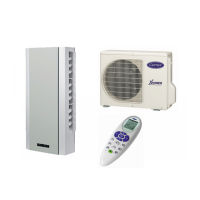


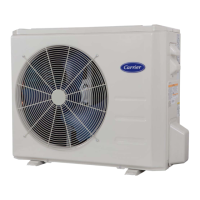
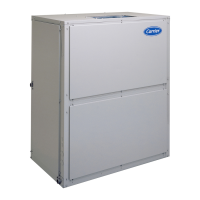



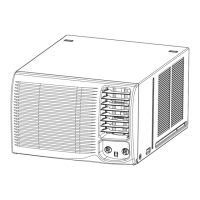
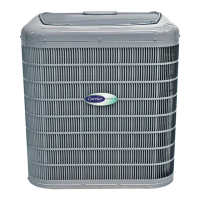
